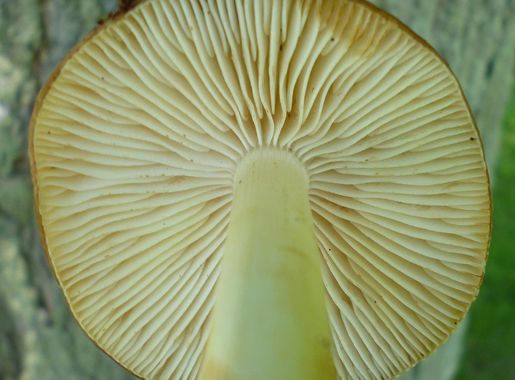
Exploring the Appalachian Trail in New Jersey: A Natural Haven
Discover the natural beauty of the Appalachian Trail in New Jersey, where scenic vistas, diverse wildlife, and outdoor adventure await along 72 miles of breathtaking trails.
The Appalachian Trail in New Jersey offers a unique blend of natural beauty and outdoor adventure. Stretching over 72 miles, this section of the trail provides hikers with scenic views of rolling hills, dense forests, and tranquil lakes. As you traverse the trail, you'll encounter diverse wildlife and lush vegetation, making it a paradise for nature enthusiasts. One of the highlights of the Appalachian Trail in New Jersey is the breathtaking vistas from the top of the Kittatinny Ridge. This ridge, part of the larger Appalachian Mountain range, offers panoramic views that are especially striking during the fall when the foliage turns vibrant shades of red and orange. The trail also passes through the Delaware Water Gap, a stunning natural formation where the Delaware River cuts through a large ridge of the Appalachian Mountains. Whether you're an experienced hiker or a casual walker, the Appalachian Trail in New Jersey has something for everyone. There are numerous access points and trailheads, making it easy to plan day hikes or longer backpacking trips. Along the way, you'll find shelters and campsites, providing a perfect opportunity to immerse yourself in nature and enjoy a night under the stars.
Local tips in Appalachian Trail
- Visit in the fall for the most stunning foliage views.
- Check weather conditions before you go; the trail can be challenging during wet or icy periods.
- Bring plenty of water and snacks, especially if you plan on hiking longer sections.
- Wear sturdy hiking boots to navigate the rocky and uneven terrain.
- Consider using trekking poles for added stability, particularly on steep inclines.
- Familiarize yourself with the trail map and markers to stay on the right path.
- Watch out for wildlife and be respectful of their natural habitat.
- Leave no trace; carry out all trash and be mindful of the environment.
Exploring the Appalachian Trail in New Jersey: A Natural Haven
The Appalachian Trail in New Jersey offers a unique blend of natural beauty and outdoor adventure. Stretching over 72 miles, this section of the trail provides hikers with scenic views of rolling hills, dense forests, and tranquil lakes. As you traverse the trail, you'll encounter diverse wildlife and lush vegetation, making it a paradise for nature enthusiasts. One of the highlights of the Appalachian Trail in New Jersey is the breathtaking vistas from the top of the Kittatinny Ridge. This ridge, part of the larger Appalachian Mountain range, offers panoramic views that are especially striking during the fall when the foliage turns vibrant shades of red and orange. The trail also passes through the Delaware Water Gap, a stunning natural formation where the Delaware River cuts through a large ridge of the Appalachian Mountains. Whether you're an experienced hiker or a casual walker, the Appalachian Trail in New Jersey has something for everyone. There are numerous access points and trailheads, making it easy to plan day hikes or longer backpacking trips. Along the way, you'll find shelters and campsites, providing a perfect opportunity to immerse yourself in nature and enjoy a night under the stars.
When is the best time to go to Appalachian Trail?
Iconic landmarks you can’t miss
Delaware Water Gap National Recreation Area
Discover the breathtaking landscapes and outdoor adventures waiting for you at Delaware Water Gap National Recreation Area in Pennsylvania.
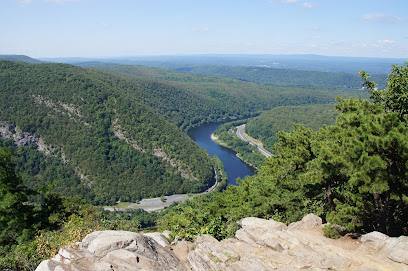
Palisades Interstate Park
Explore the stunning Palisades Interstate Park: a natural retreat with breathtaking views, scenic trails, and abundant wildlife just outside New York City.
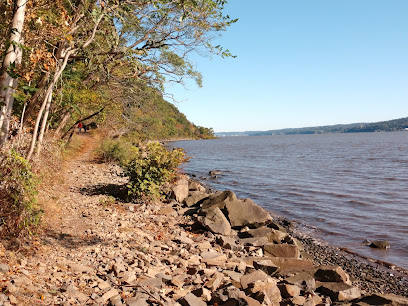
High Point State Park
Experience breathtaking views and outdoor adventures at High Point State Park, New Jersey's highest elevation and a natural haven for all.
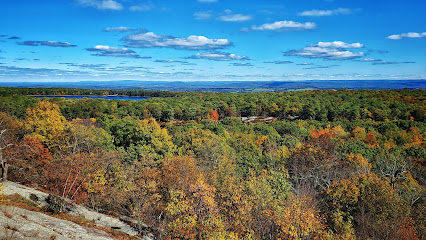
Mt Tammany Red Dot Trail
Explore the stunning Mt Tammany Red Dot Trail for breathtaking views and an unforgettable hiking experience in New Jersey's Kittatinnies Region.
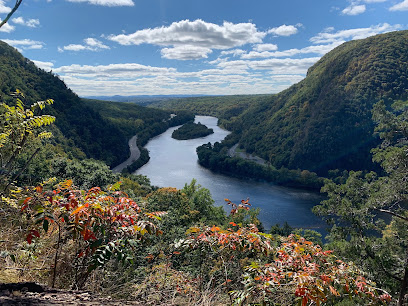
Wawayanda State Park
Explore the breathtaking landscapes and diverse wildlife of Wawayanda State Park, a tranquil oasis for outdoor enthusiasts in New Jersey.
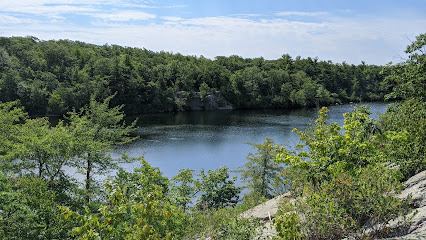
Sourland Mountain Preserve
Discover the breathtaking beauty of Sourland Mountain Preserve, an outdoor haven filled with rich flora, diverse wildlife, and stunning rock formations.
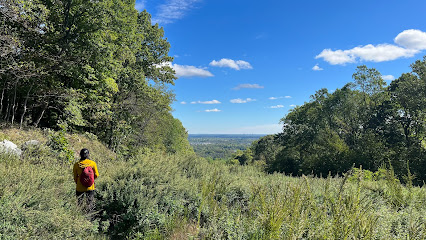
G. Thomas Donch Nature Preserve (formerly known as Franklin Lakes Nature Preserve)
Explore the breathtaking G. Thomas Donch Nature Preserve in Franklin Lakes, NJ, a perfect getaway for nature lovers and outdoor enthusiasts alike.
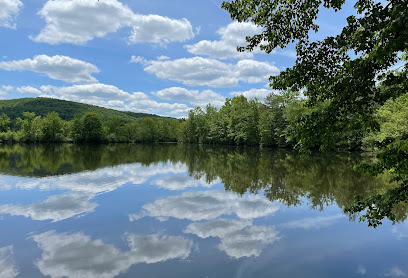
Historic Smithville Park
Discover Historic Smithville Park: A perfect blend of nature, history, and recreation in Eastampton Township, New Jersey.
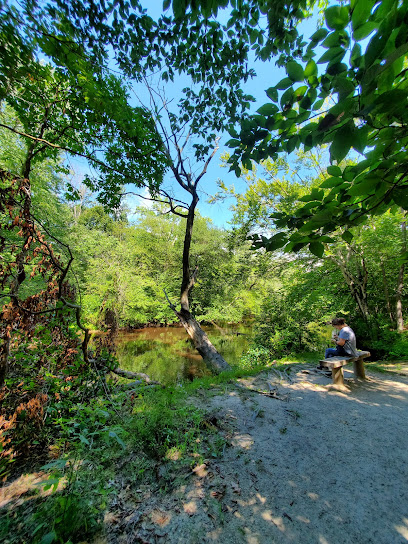
Worthington State Forest
Explore the picturesque landscapes and diverse wildlife of Worthington State Forest, a premier destination for outdoor adventures in New Jersey’s natural beauty.
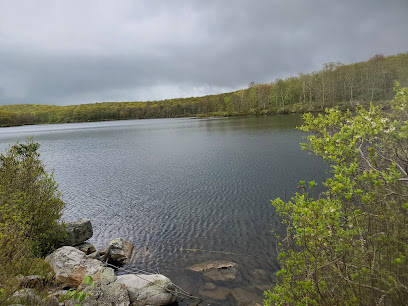
Appalachian Trail Boardwalk
Discover the tranquility and natural beauty of the Appalachian Trail Boardwalk in Glenwood, NJ, a premier hiking destination for nature lovers and adventurers.
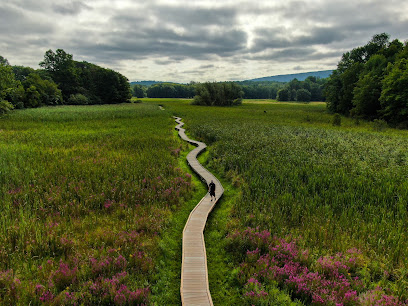
Kittatinny Valley State Park
Discover Kittatinny Valley State Park: A Natural Haven for Hiking, Picnicking, and Wildlife Watching in New Jersey's Scenic Landscape.
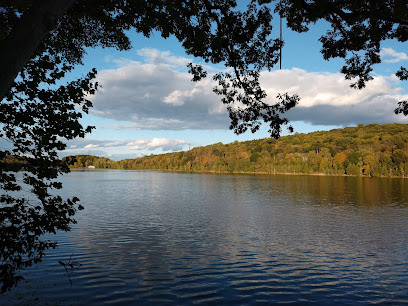
Kittatinny Point Visitor Center
Explore the Kittatinny Point Visitor Center, your gateway to the Delaware Water Gap's natural beauty and outdoor adventures.
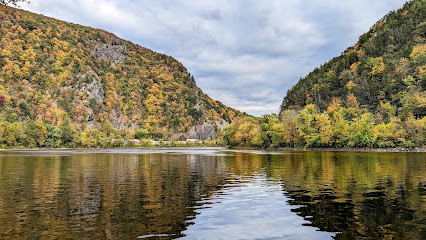
High Mountain Park Preserve
Immerse yourself in the breathtaking beauty of High Mountain Park Preserve, a serene nature retreat in New Jersey perfect for hiking and exploring the outdoors.
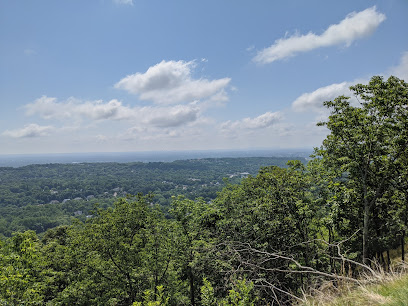
Stokes State Forest
Explore the serene landscapes and diverse wildlife of Stokes State Forest, a premier destination for outdoor adventures in New Jersey.
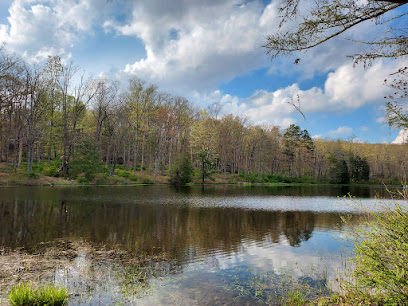
Mt Tammany
Explore Mt Tammany, a stunning park in Columbia, NJ, known for its breathtaking views, challenging trails, and serene natural beauty.
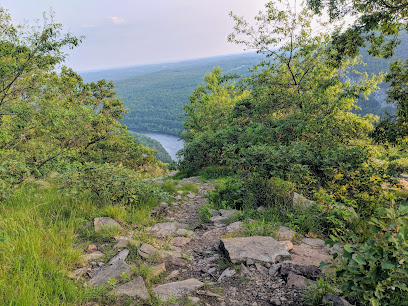
Unmissable attractions to see
Delaware Water Gap National Recreation Area
Explore the breathtaking landscapes and diverse wildlife at Delaware Water Gap National Recreation Area, a true gem for outdoor enthusiasts.
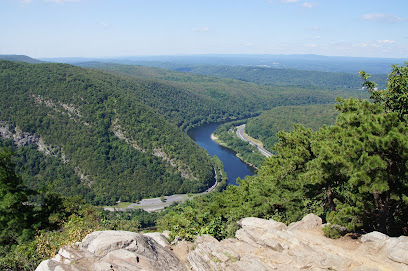
Mountain Creek Resort
Discover year-round excitement at Mountain Creek Resort, where adventure awaits in every season from skiing to water parks.
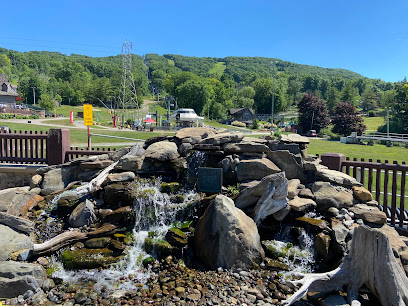
Palisades Interstate Park
Explore the breathtaking Palisades Interstate Park, where nature and history unite along the scenic Hudson River in New Jersey.
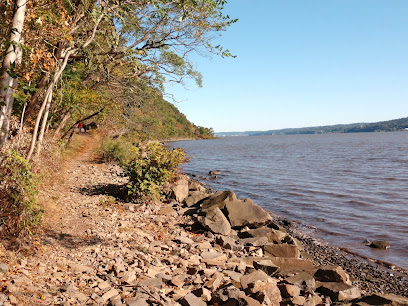
Hawk Mountain Sanctuary
Explore Hawk Mountain Sanctuary – a premier destination for birdwatching, hiking, and nature conservation in Pennsylvania's scenic landscapes.
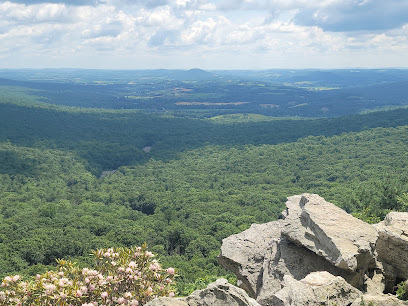
Perkins Memorial Tower
Discover breathtaking views and rich history at Perkins Memorial Tower, a must-visit landmark in Bear Mountain State Park, New York.
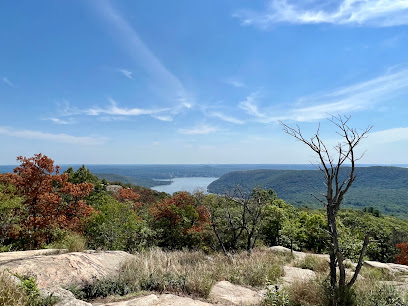
Sourland Mountain Preserve
Discover the breathtaking beauty and diverse ecosystems of Sourland Mountain Preserve, a nature lover's paradise in New Jersey.
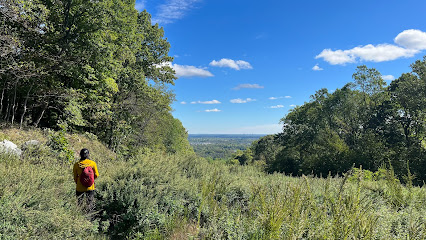
Buttermilk Falls
Explore the breathtaking Buttermilk Falls in Layton, NJ, where cascading waterfalls meet lush hiking trails in the heart of nature's paradise.
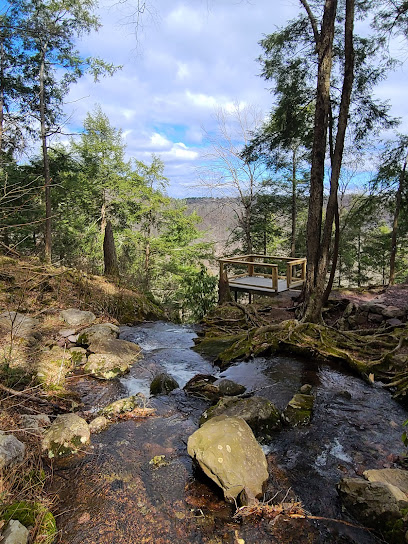
G. Thomas Donch Nature Preserve (formerly known as Franklin Lakes Nature Preserve)
Explore the breathtaking beauty of G. Thomas Donch Nature Preserve, a tranquil retreat in Franklin Lakes, perfect for hiking, birdwatching, and photography.
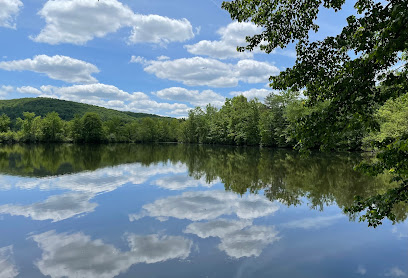
Alpine Lookout
Experience Alpine Lookout: A Scenic Gem Offering Stunning Views of the Hudson River and New York City Skyline.
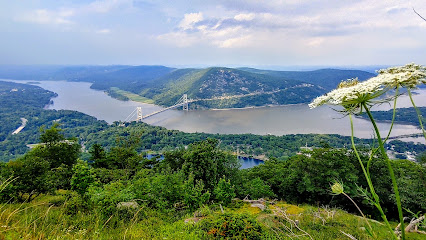
Kittatinny Point Visitor Center
Explore the Kittatinny Point Visitor Center, your gateway to stunning landscapes and outdoor adventures in the Delaware Water Gap National Recreation Area.
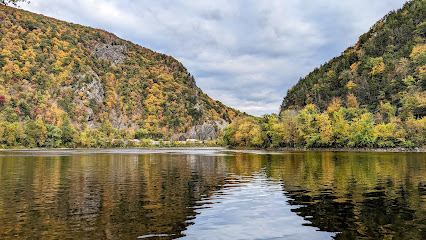
Trailside Museums & Zoo
Explore the unique blend of wildlife and natural history at the Trailside Museums & Zoo in Bear Mountain, a must-visit for nature lovers and families.
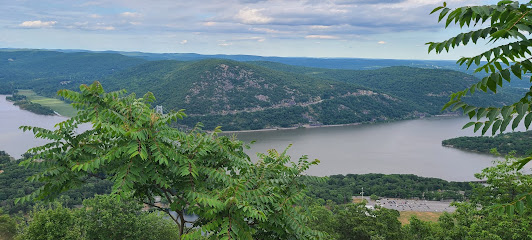
Bake Oven Knob
Discover stunning views and vibrant hiking trails at Bake Oven Knob, a must-visit spot on the Appalachian National Scenic Trail in Pennsylvania.
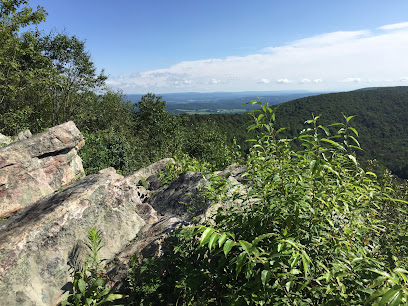
High Mountain Park Preserve
Discover the natural beauty and serene landscapes of High Mountain Park Preserve, a premier outdoor destination in New Jersey for hiking and wildlife exploration.
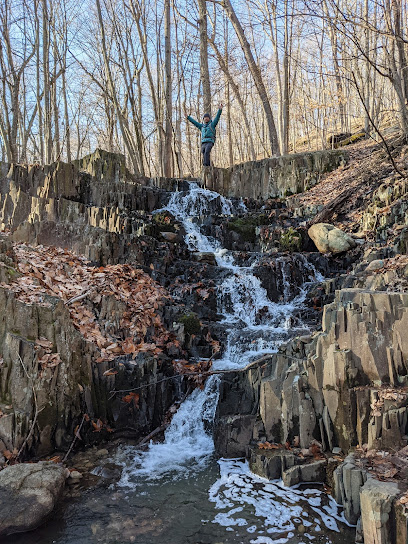
Wallkill River National Wildlife Refuge
Explore the breathtaking landscapes and diverse wildlife at Wallkill River National Wildlife Refuge, the perfect escape for nature lovers in New Jersey.

Maple Grange Park
Discover the natural beauty and recreational fun at Maple Grange Park in Vernon Township, NJ, a perfect getaway for families and nature lovers.
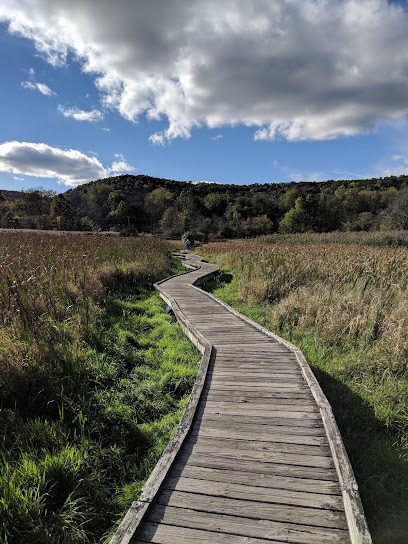
Essential places to dine
Cuban Pete's
Discover authentic Cuban cuisine at Cuban Pete's in Montclair - where vibrant flavors meet festive ambiance.
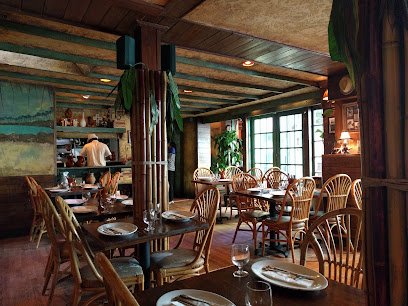
Clinton Station Diner
Experience classic American comfort food at Clinton Station Diner in Clinton, NJ - perfect for breakfast lovers and casual diners alike.
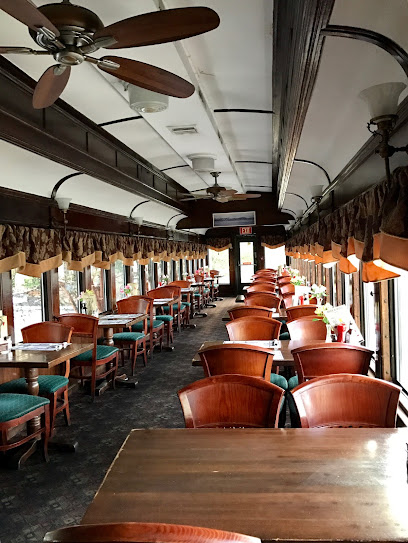
Hot Dog Johnny's
Experience authentic American street food at Hot Dog Johnny's - where every bite is a taste of tradition in beautiful Belvidere.
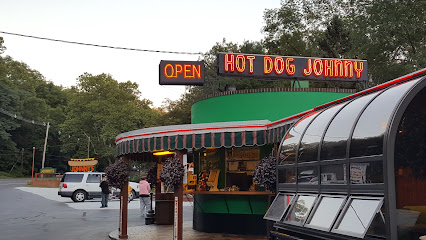
Prospector's Steakhouse & Saloon
Discover flavorful steaks and lively entertainment at Prospector's Steakhouse & Saloon in Mt. Laurel Township - where every meal is an adventure.
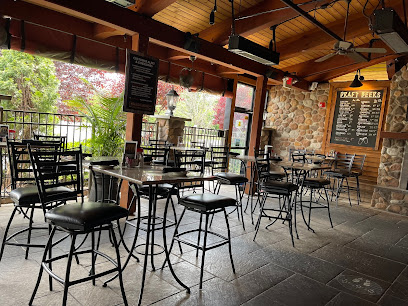
Destination Dogs
Discover Destination Dogs in New Brunswick: A hotspot for gourmet hot dogs and craft drinks blending tradition with innovation.
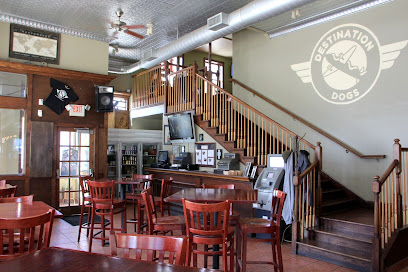
Rainforest Cafe
Experience dining like never before at Rainforest Cafe – where American cuisine meets a vibrant jungle atmosphere!
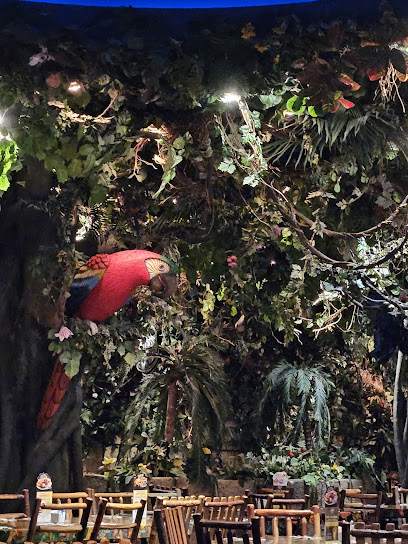
Rat's Restaurant
Indulge in authentic French cuisine at Rat's Restaurant in Hamilton Township, where culinary excellence meets enchanting ambiance.
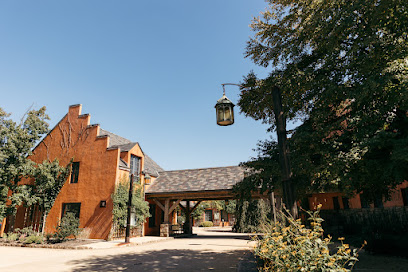
Knife and Fork Inn
Experience the exquisite flavors of steak and seafood at Knife and Fork Inn in Atlantic City – where culinary tradition meets modern elegance.
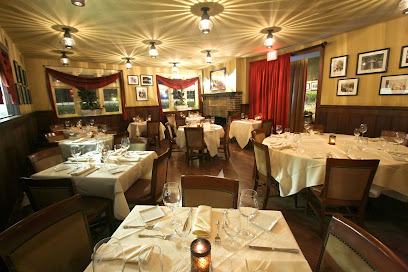
Town Diner
Discover classic American breakfast favorites at Town Diner - where family-friendly dining meets hearty portions in East Windsor.
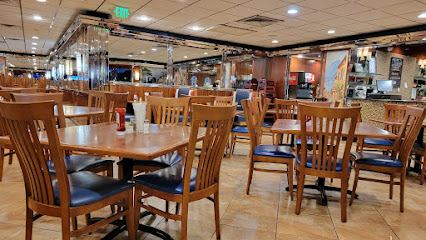
Cafe Archetypus
Discover Cafe Archetypus in Edgewater: A charming cafe offering artisanal coffee and delicious pastries with stunning river views.
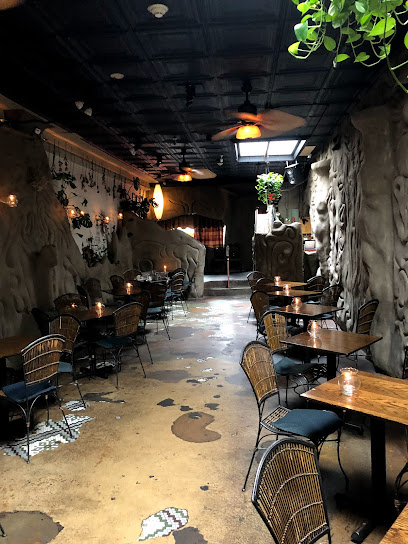
Sycamore Grille
Discover delicious American cuisine and vibrant live music at Sycamore Grille in Delaware Water Gap - A must-visit for food lovers.
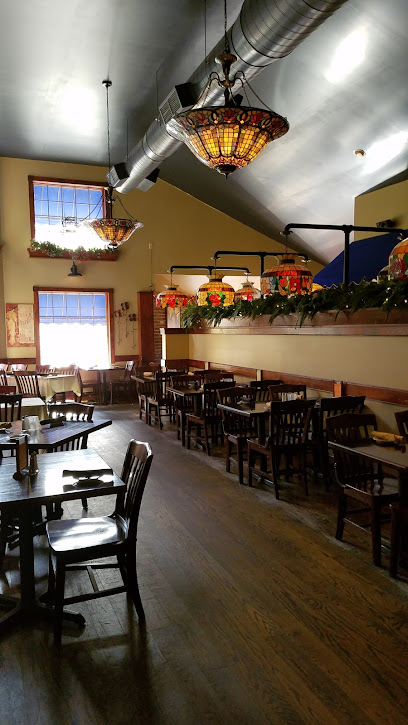
Grillestone Old Bridge
Discover Grillestone Old Bridge: A culinary gem serving gourmet burgers, fresh seafood, succulent steaks & delightful sushi in New Jersey.

Mt Bethel Diner
Experience the warmth of Mt Bethel Diner - where hearty breakfasts meet friendly service in scenic Pennsylvania.
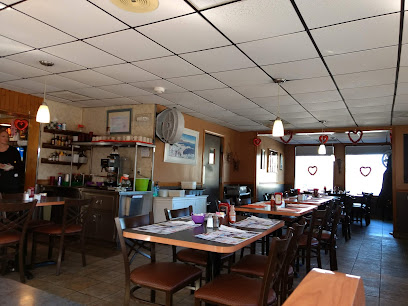
Hillsborough Star Diner
Experience authentic American dining at Hillsborough Star Diner - your go-to destination for delicious breakfasts and comforting lunches in New Jersey.
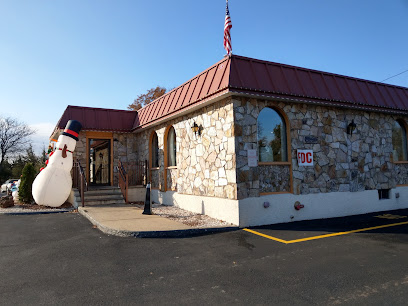
The Glenwood & The Underground
Discover vibrant dining and entertainment at The Glenwood & The Underground in Vernon Township - where delicious meals meet lively atmospheres.
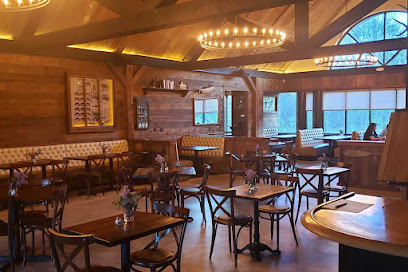
Markets, malls and hidden boutiques
Factory Antique Mall
Explore Factory Antique Mall, a vast antique haven in Verona, Virginia, featuring thousands of unique treasures waiting to be discovered.
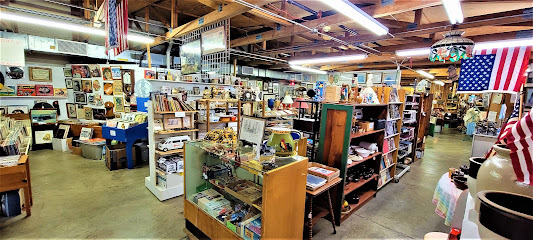
Appalachian Trail Boardwalk
Discover the Appalachian Trail Boardwalk: a serene hiking experience in Glenwood, NJ, perfect for nature lovers and outdoor adventurers alike.
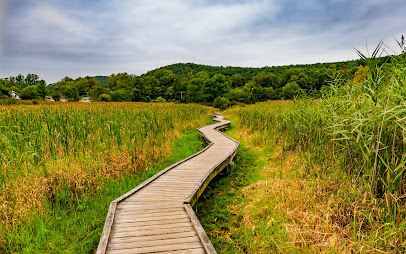
Heaven Hill Farm Garden Center and Farm Market
Explore Heaven Hill Farm Garden Center: A perfect blend of nature, gourmet delights, and seasonal festivities in New Jersey.
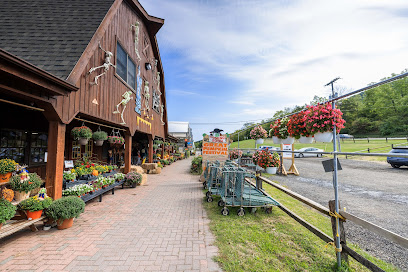
MyUnique Thrift
Explore MyUnique Thrift in Union, NJ for amazing vintage finds, unbeatable bargains, and a taste of local culture in every corner.

Edge of the Woods Outfitters
Discover the thrill of outdoor adventures at Edge of the Woods Outfitters in Delaware Water Gap, where nature meets excitement.

The Vreeland Store
Discover delicious local flavors and a cozy atmosphere at The Vreeland Store, a historic gem in West Milford, NJ.
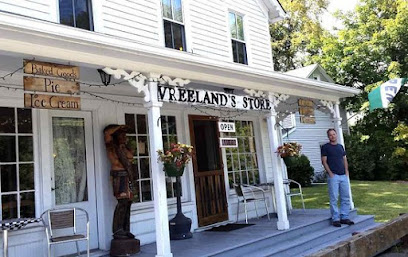
Clove Brook Market | Bakery, Deli, & Catering
Discover Clove Brook Market, Sussex's premier bakery and deli, offering fresh baked goods, hearty breakfasts, and exceptional catering services.
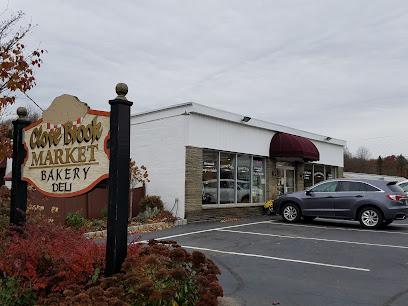
Camp Taylor Campground
Discover the tranquility and adventure at Camp Taylor Campground, New Jersey's premier outdoor retreat, with cabins, camping, and scenic surroundings.
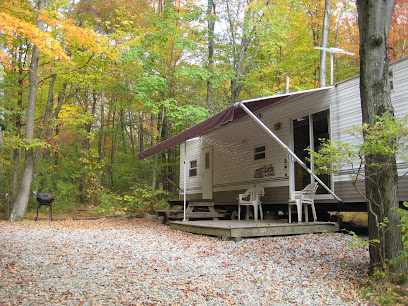
Pochuck Valley Farm Market & Deli
Discover the essence of Glenwood, NJ at Pochuck Valley Farm Market & Deli, where fresh flavors and local products await.
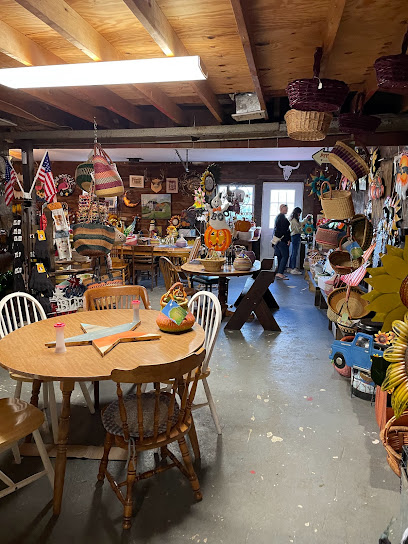
AMC Mohican Outdoor Center
Explore the AMC Mohican Outdoor Center, an outdoor paradise in New Jersey offering camping, hiking, canoeing, and a serene swimming lake.

Schooley's Mountain General Store
Experience the delightful Schooley's Mountain General Store, where delicious pizza meets local charm in New Jersey's beautiful countryside.
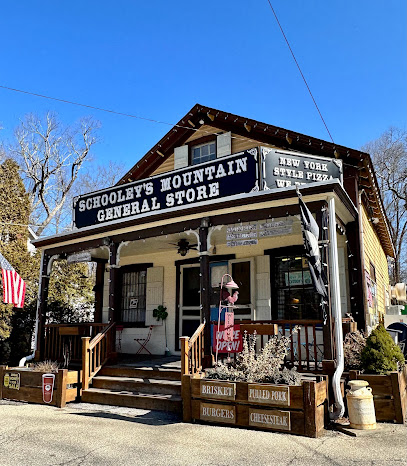
Stairway To Heaven
Experience the breathtaking vistas and challenging trails of Stairway to Heaven, a premier hiking destination in Vernon Township, New Jersey.
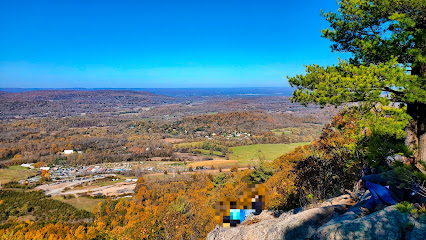
Just Jersey
Discover unique gifts and souvenirs that celebrate New Jersey culture at Just Jersey, a charming shop in Morristown.
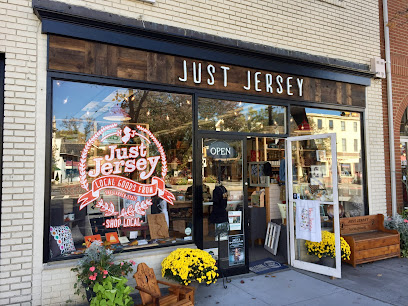
The Farm at Glenwood Mountain
Experience the charm and serenity of The Farm at Glenwood Mountain, a perfect blend of farmstay, dining, and local meat products in Sussex, NJ.
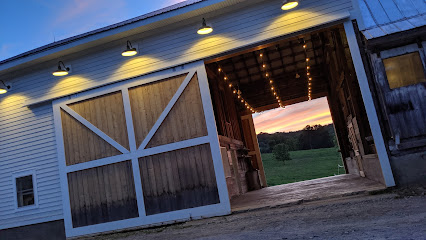
Woodglen General Store
Explore Woodglen General Store: A charming general store in New Jersey offering local groceries, unique gifts, and a warm atmosphere for all visitors.
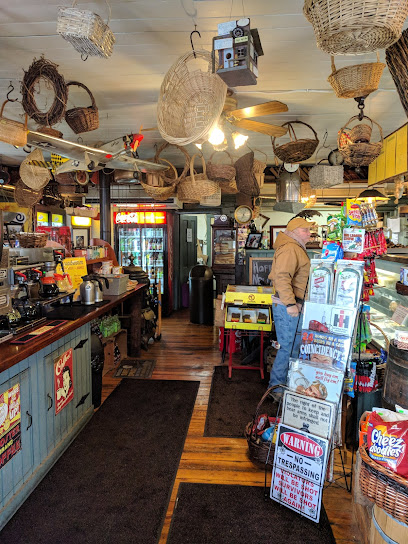
Essential bars & hidden hideouts
Hot Dog Johnny's
Experience the iconic flavors of Hot Dog Johnny's, a beloved hot dog stand in Belvidere, New Jersey, offering delicious meals in a charming setting.
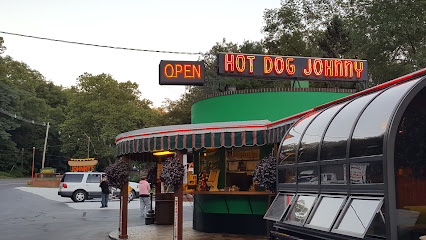
Millworks
Discover Millworks in Harrisburg: Where Culinary Excellence Meets Artistic Innovation in a Unique Brewery Setting.
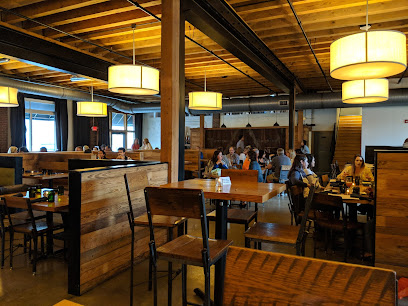
Martell's Tiki Bar
Discover the tropical oasis of Martell's Tiki Bar, a vibrant beachside destination serving cocktails and delicious food in Point Pleasant Beach, NJ.
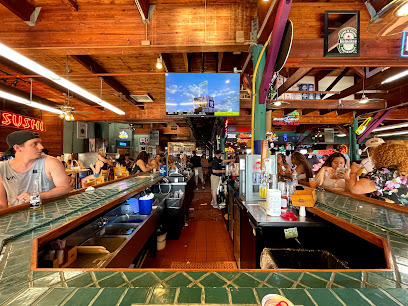
Brick House Tavern + Tap
Experience the lively atmosphere and delicious grill cuisine at Brick House Tavern + Tap, a South Plainfield favorite for locals and tourists alike.

Bar Anticipation
Experience vibrant nightlife at Bar Anticipation, Lake Como's premier destination for grill cuisine, live music, and unforgettable moments.
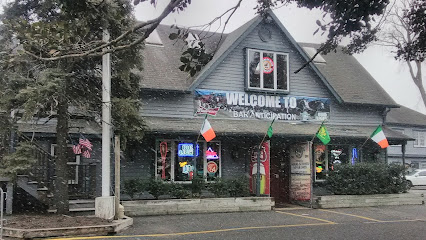
Brown Stone Bar & Grill
Discover the heart of American cuisine at Brown Stone Bar & Grill in Metuchen, where great food meets a vibrant atmosphere.

End of Elm
Discover the vibrant culinary scene at End of Elm, a stylish bar and restaurant in Morristown, NJ, featuring exquisite cocktails, tapas, and an inviting atmosphere.
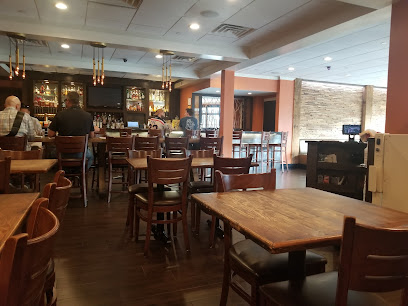
Mountain House Tavern and Grill
Discover the flavors of Branchville at Mountain House Tavern and Grill, where delicious grilled dishes meet a cozy atmosphere in New Jersey.
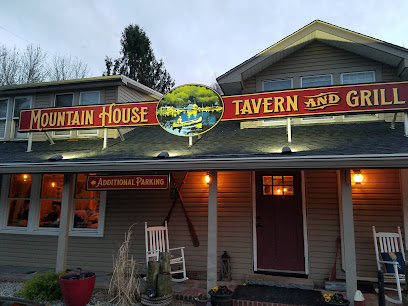
The Dublin Yard
Experience the vibrant spirit of Ireland at The Dublin Yard in Secaucus, where delicious food and lively entertainment await you.
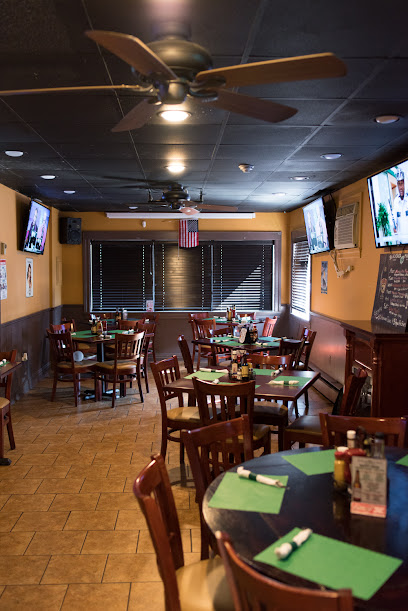
Appalachian Trail Boardwalk
Discover the Appalachian Trail Boardwalk in Glenwood, NJ - a serene hiking experience surrounded by nature's beauty and wildlife.
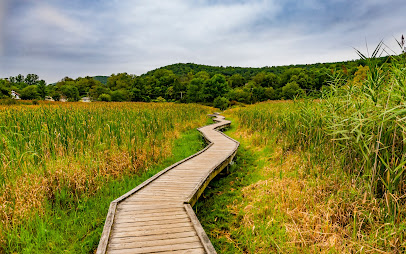
The Laundromat
Experience the vibrant nightlife at The Laundromat, a unique bar in Morristown offering cocktails, live music, and a welcoming atmosphere.
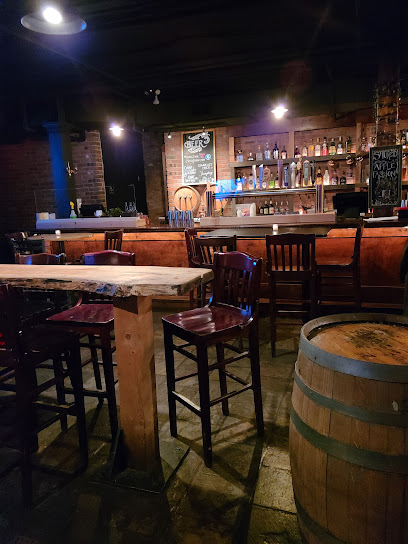
The Daily Bean
Discover the charm of Vernon Township at The Daily Bean, a cozy cafe serving exceptional coffee and delightful breakfast options.
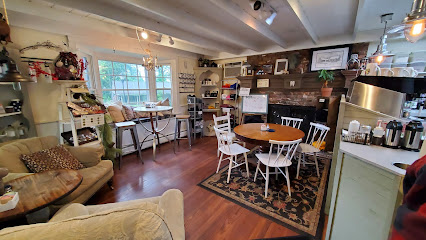
Wayside Inn & Larrick's Tavern
Experience the charm of history at Wayside Inn & Larrick's Tavern in Middletown, VA, where comfort meets tradition and every meal tells a story.
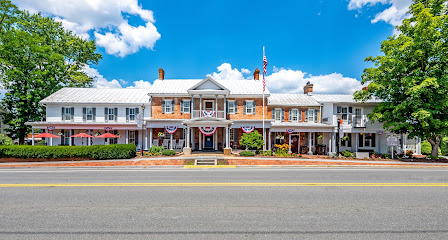
Deer Head Inn
Discover Deer Head Inn in Delaware Water Gap: Where fine dining meets the soulful rhythms of live jazz music for an unforgettable experience.

Yankee Doodle Tap Room
Explore the rich history and savor classic American dishes at Yankee Doodle Tap Room in Princeton, a must-visit dining destination.
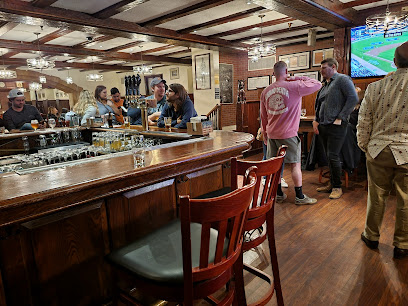
Local Phrases about Appalachian Trail
-
- HelloHowdy
[haw-dee] - GoodbyeSee ya
[see yuh] - YesYup
[yuhp] - NoNah
[nuh] - Please/You're welcomePlease/No problem
[pleez/no prob-lem] - Thank youThank ya
[thank yuh] - Excuse me/SorryPardon me/My bad
[par-dun me/my bad] - How are you?Howdy
[haw-dee] - Fine. And you?Doin' well. And you?
[doin' well. and yuh?] - Do you speak English?Ya speak English?
[yah speak ing-glish?] - I don't understandI ain't catchin' ya
[I aint catch-in yuh]
- HelloHowdy
-
- I'd like to see the menu, pleaseI reckon I'll take a look at the menu
[I reckon I'll take a look at the menu] - I don't eat meatI ain't no meat-eater
[I aint no meat-eater] - Cheers!Bottoms up!
[bot-ums up] - I would like to pay, pleaseI reckon I'll settle up now, please
[I reckon I'll settle up now, please]
- I'd like to see the menu, pleaseI reckon I'll take a look at the menu
-
- Help!Help!
[Help!] - Go away!Git out!
[git out!] - Call the Police!Ring the Sheriff!
[ring the sheriff!] - Call a doctor!Fetch a doc!
[fetch a doc!] - I'm lostI'm turned around
[I'm turned around] - I'm illI'm feelin' poorly
[I'm feelin' poorly]
- Help!Help!
-
- I'd like to buy...I reckon I'll grab...
[I reckon I'll grab...] - I'm just lookingJust browsin'
[just browsin'] - How much is it?What's the damage?
[whats the dam-age] - That's too expensiveThat's steep
[that's steep] - Can you lower the price?Can ya come down on the price?
[can ya come down on the price?]
- I'd like to buy...I reckon I'll grab...
-
- What time is it?What's the hour?
[whats the hour?] - It's one o'clockIt's one
[It's one] - Half past (10)Ten-thirty
[ten-thur-tee] - MorningMornin'
[mornin'] - AfternoonAfternoon
[Afternoon] - EveningEvenin'
[evenin'] - YesterdayYest'day
[yest'day] - TodayToday
[Today] - TomorrowTomorrer
[tom-or-er] - 1One
[One] - 2Two
[Two] - 3Three
[Three] - 4Four
[Four] - 5Five
[Five] - 6Six
[Six] - 7Seven
[Seven] - 8Eight
[Eight] - 9Nine
[Nine] - 10Ten
[Ten]
- What time is it?What's the hour?
-
- Where's a/the...?Where's... at?
[Where's... at?] - What's the address?What's the street?
[What's the street?] - Can you show me (on the map)?Can ya point it out (on the map)?
[Can ya point it out (on the map)?] - When's the next (bus)?When's the next bus?
[When's the next bus?] - A ticket (to ....)A pass (to ....)
[A pass (to ....)]
- Where's a/the...?Where's... at?
History of Appalachian Trail
-
Long before European settlers arrived, the Appalachian Trail area in New Jersey was inhabited by the Lenape people. They were skilled hunters, fishers, and farmers, and their trails and paths were some of the precursors to the modern-day Appalachian Trail. The Lenape had a rich culture and a deep spiritual connection to the land, which is still evident in some of the artifacts and place names found along the trail.
-
During the 17th and 18th centuries, European settlers began to move into the area that is now New Jersey. The Appalachian Trail corridor saw its fair share of colonial activity. Many settlers established farms and small communities, often displacing the native Lenape. The trail passes through several historic sites from this period, including old homesteads and remnants of colonial infrastructure.
-
The Appalachian Trail in New Jersey runs through areas that played significant roles during the American Revolutionary War. Notably, the area around High Point State Park was a strategic location for both the British and American forces. General George Washington's troops moved through this region, and several skirmishes and battles took place here. The trail offers hikers a chance to walk in the footsteps of history, with several markers and interpretive signs detailing these events.
-
In the 19th century, the Appalachian region of New Jersey saw a boom in iron mining and related industries. The trail passes near several old iron mines and furnaces, which were once bustling centers of activity. The remnants of these industrial sites can still be explored today, offering a glimpse into the region's industrious past.
-
The Appalachian Trail itself was conceived in the early 20th century by Benton MacKaye as a means to connect people with nature. New Jersey's section of the trail was one of the earlier portions to be developed, with significant contributions from local hiking clubs and conservationists. The trail officially opened in 1937, and has since become a beloved path for hikers and nature enthusiasts.
-
High Point State Park, located near the northern terminus of New Jersey's Appalachian Trail section, is home to the highest elevation in the state. The park was established in the 1920s, and its iconic High Point Monument—dedicated to war veterans—was completed in 1930. The monument offers stunning views of the surrounding landscape and is a popular destination for hikers and history buffs alike.
-
Throughout the late 20th and early 21st centuries, there have been numerous efforts to conserve and protect the natural beauty of the Appalachian Trail in New Jersey. Organizations like the Appalachian Trail Conservancy and local groups have worked tirelessly to maintain the trail, prevent overdevelopment, and protect the diverse ecosystems found along its path. These efforts ensure that the trail remains a pristine and inviting destination for future generations.
Appalachian Trail Essentials
-
The Appalachian Trail in New Jersey is accessible from various entry points along its route, from the Delaware Water Gap in the south to High Point State Park in the north. The nearest major airports are Newark Liberty International Airport (EWR) and Lehigh Valley International Airport (ABE). From these airports, you can rent a car or take public transport to reach trailheads. Major highways like I-80 and Route 206 offer convenient access points to the trail.
-
While public transport options directly to the trail are limited, renting a car is the most convenient way to reach various trailheads. NJ Transit provides bus and train services to nearby towns like Delaware Water Gap, but you may need a taxi or rideshare service to get from these towns to the actual trailheads. Parking is available at many trail entry points but can fill up quickly during peak seasons.
-
The official currency in the United States is the US Dollar (USD). Credit and debit cards are widely accepted at gas stations, restaurants, and stores near the trail. It is advisable to carry some cash for smaller establishments, particularly if you plan to visit rural areas or small towns. ATMs are available in nearby towns like Blairstown and Vernon.
-
The Appalachian Trail in New Jersey is generally safe, but standard precautions should be taken. Avoid hiking alone, especially at night. Be aware of your surroundings and keep valuables secure. Some areas, particularly urban outskirts, may have higher crime rates. It is advisable to stay on marked trails and avoid wandering into unknown areas. Always inform someone of your hiking plans and expected return time.
-
In case of emergency, dial 911 for immediate assistance. Emergency services are available, but response times can vary depending on your location on the trail. It is advisable to carry a first aid kit and know basic first aid procedures. Mobile phone coverage can be spotty, so consider carrying a personal locator beacon (PLB) or satellite phone. Ranger stations and visitor centers, like those at High Point State Park and Delaware Water Gap, can also provide assistance.
-
Fashion: Do wear appropriate hiking gear, including sturdy boots and weather-appropriate clothing. Avoid wearing sandals or flip-flops. Religion: The trail does not have specific religious customs, but respect any local traditions you may encounter. Public Transport: Do be respectful and patient when using local buses or trains. Don’t leave trash or belongings behind. Greetings: Do greet fellow hikers with a friendly nod or 'hello.' Hiking etiquette is to yield to uphill hikers and step aside for faster hikers. Eating & Drinking: Do pack out all trash and food waste. Don’t feed wildlife, as it disrupts their natural habits.
-
To experience the Appalachian Trail like a local, visit in the early morning or late afternoon to avoid crowds. Connect with local hiking groups or forums for insider tips on less-known scenic spots. High Point State Park offers some of the best views in the state. Visit local diners and general stores in nearby towns for a taste of local hospitality and cuisine. Carry a trail map and a guidebook specific to the New Jersey section for a richer experience.
Trending Landmarks in Appalachian Trail
-
Delaware Water Gap National Recreation Area
-
Palisades Interstate Park
-
High Point State Park
-
Mt Tammany Red Dot Trail
-
Wawayanda State Park
-
Sourland Mountain Preserve
-
G. Thomas Donch Nature Preserve (formerly known as Franklin Lakes Nature Preserve)
-
Historic Smithville Park
-
Worthington State Forest
-
Appalachian Trail Boardwalk
-
Kittatinny Valley State Park
-
Kittatinny Point Visitor Center
-
High Mountain Park Preserve
-
Stokes State Forest
-
Mt Tammany
Nearby Cities to Appalachian Trail
-
Things To Do in Yonkers
-
Things To Do in Hoboken
-
Things To Do in Jersey City
-
Things To Do in Poughkeepsie
-
Things To Do in White Plains
-
Things To Do in New York City
-
Things To Do in Scranton
-
Things To Do in Greenwich
-
Things To Do in Allentown
-
Things To Do in Stamford
-
Things To Do in Lambertville
-
Things To Do in Danbury
-
Things To Do in Norwalk
-
Things To Do in Red Bank
-
Things To Do in Trenton


